

Meet Alison Tita — Immersion Research Ambassador, Arizona native, teacher, climber, hiker, and now… packrafter. She's one of many hardshell kayakers discovering the unique benefits of adding a packraft to their adventure quiver, blending river miles with trail miles and proving that packrafts are an upgrade to your adventure toolkit.
Packrafting. A method of river travel that’s been gaining popularity for years. At first, I wondered: Why would anyone want to paddle one of these when they could paddle a hardshell? Then, I moved to the Southwest, and discovered that many boating options require hiking. The best part about packrafts, is that they allow you to visit remote locations, travel by river, and store gear in a comfortable way.
The following trip report is from one of my favorite packrafting trips I’ve completed. In October, my partner, Michael, and I, completed the following itinerary in the Grand Canyon.
Day 1: Hike down Tanner trail and camp along the Beamer trail.
Day 2: Hike up-river on the Beamer trail to the confluence of the Little Colorado River
Day 3: Packraft to Carbon Canyon, and complete the Carbon/Chuar/Lava hike. Packraft to just above Tanner rapid. Sleep at Tanner Camp.
Day 4: Hike out of the Grand Canyon on the Tanner Trail.
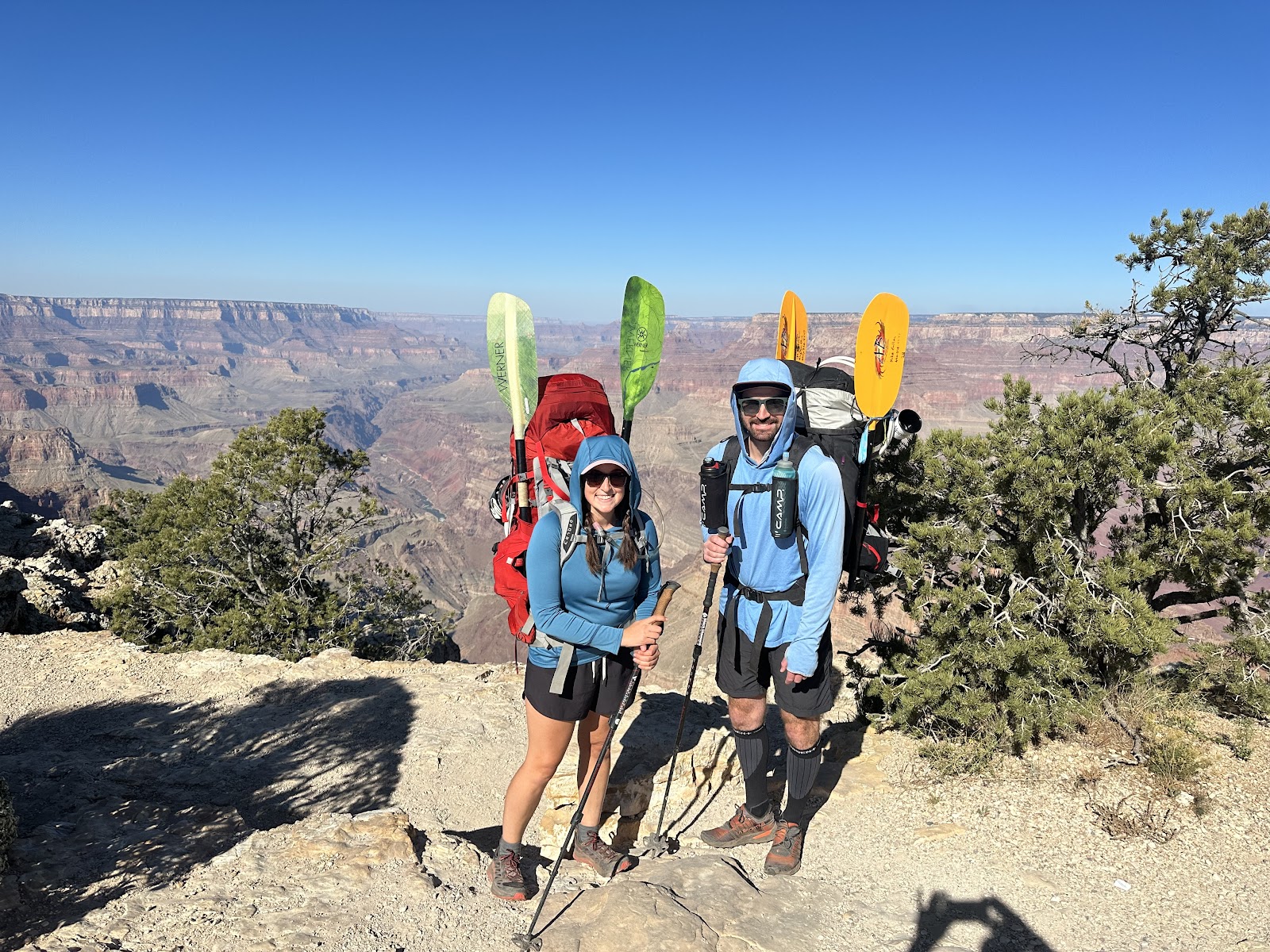
Michael and I grabbed our 50 pound packs that we had filled the night before and loaded them into the car. The beginning of the week had been a bit chaotic at work and we were excited to get out of town for a few days. We stopped at a local cafe for breakfast and sandwiches to eat on the trail, and made our way to the Tanner Trailhead along the South Rim of the Grand Canyon. As we drove the 90 minutes or so from Flagstaff to the trailhead, we triple checked the weather. In Grand Canyon Village, the highs were forecasted to be mid 70s, with lows in the mid 30s. Weather at the bottom of the canyon was predicted to be about 15 degrees warmer, depending on the time of day. We were confident that we had packed accordingly: Tent, sleep kits, stove and fuel, extra layers for mornings and evenings, a water filter that we didn’t know needed to be replaced, bathroom kits, packrafts and pump, repair kit, paddles, PFDs, helmets, food, and a few other personal items.
While finalizing our kits and tying our shoes, we received a few strange looks, and multiple questions from curious tourists and hikers. After all, it’s not everyday that a hiker sees backpackers carrying paddles, PFDs, and packraft coaming on the outside of their packs… into the desert. We explained that we would be descending The Tanner Trail, visiting the confluence of the Little Colorado River, exploring side canyons, and hiking back out on the Tanner trail four days later. A stranger took our photo before we started our descent around 10AM.
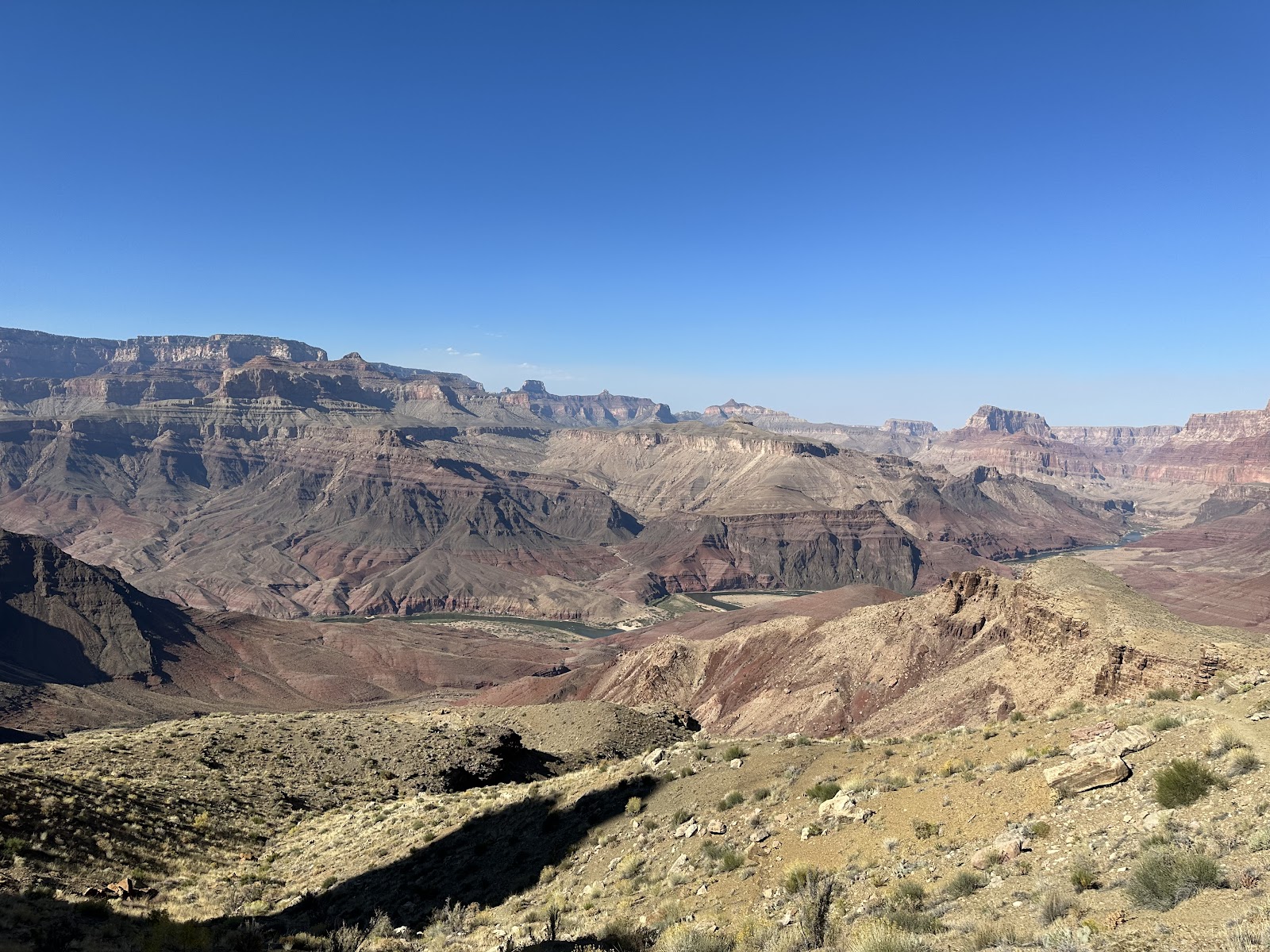
The Tanner Trail is awesome. The river comes into sight early, the views are expansive, and it’s less popular than the corridor trails. According to the trail description on the NPS webpage, the start of our hike was 9 miles from the river. The weight of our backpacks and steep loose terrain made for a slower than usual hiking pace, not that I’m normally a fast hiker. We had each packed about 2.5 liters of water to get us down to the Colorado. The sun made the day feel much warmer than forecasted, and we were excited to filter water and refill our bottles. Once we made it to the river, we noticed that our water filter was not in good shape, and spent about double the anticipated time filtering water for the remainder of our trip. We soaked our feet while we filtered enough water to get to our camp about a mile or so farther along the Beamer Trail.
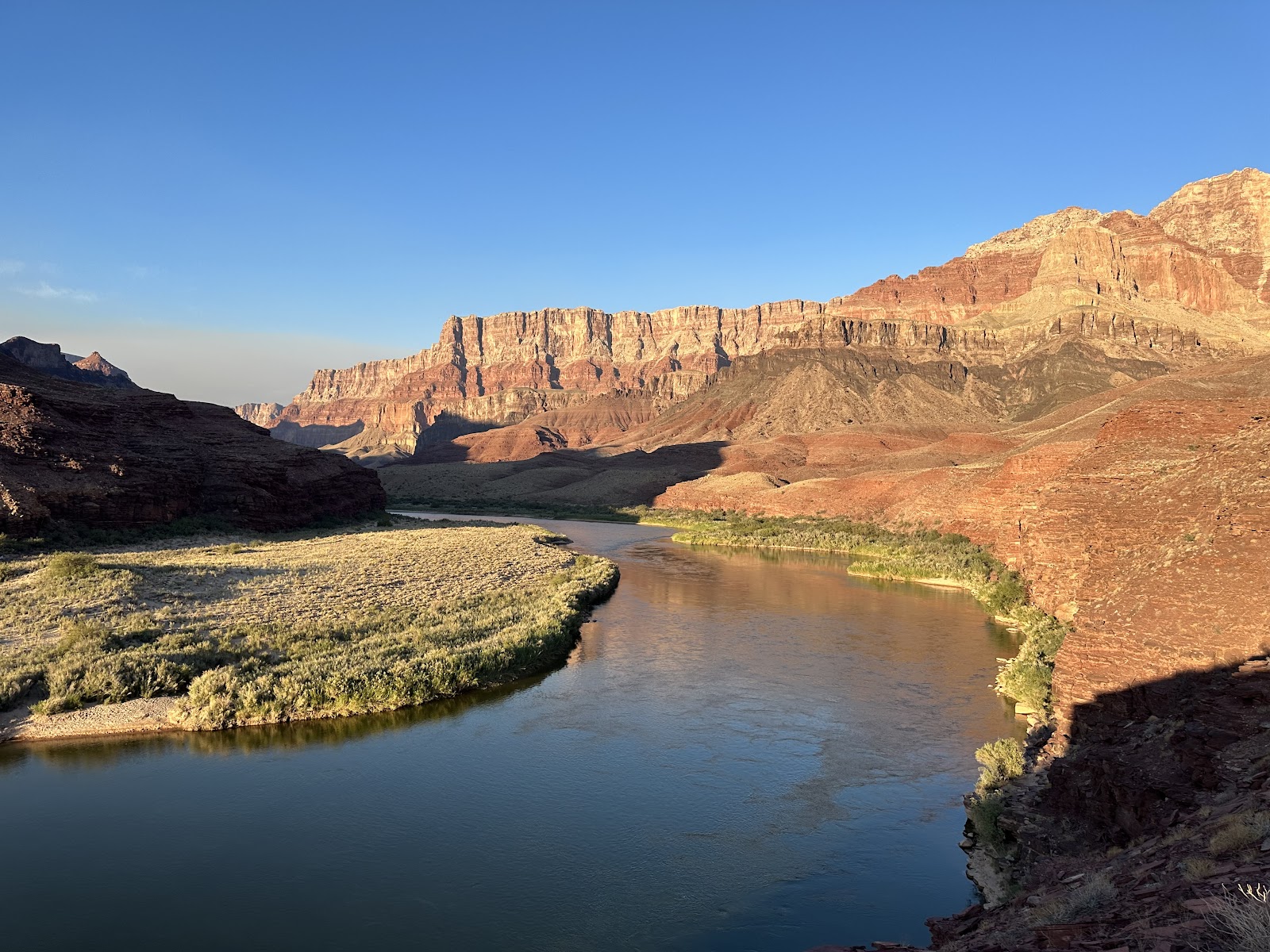
We made camp right around 6pm, which in October, was dusk. While filtering water, we noticed beavers playing in the water, and a rafting trip having dinner at sixty-eight mile camp. It was fun to observe their group, knowing they had no clue we existed. As we were laying in the tent, we saw a giant fireball in the sky. The orange color fizzled into a bright blue/green as it burned away. Our minds raced-aliens, space garbage, an asteroid? We chatted for a bit until the conversation faded into sleep.
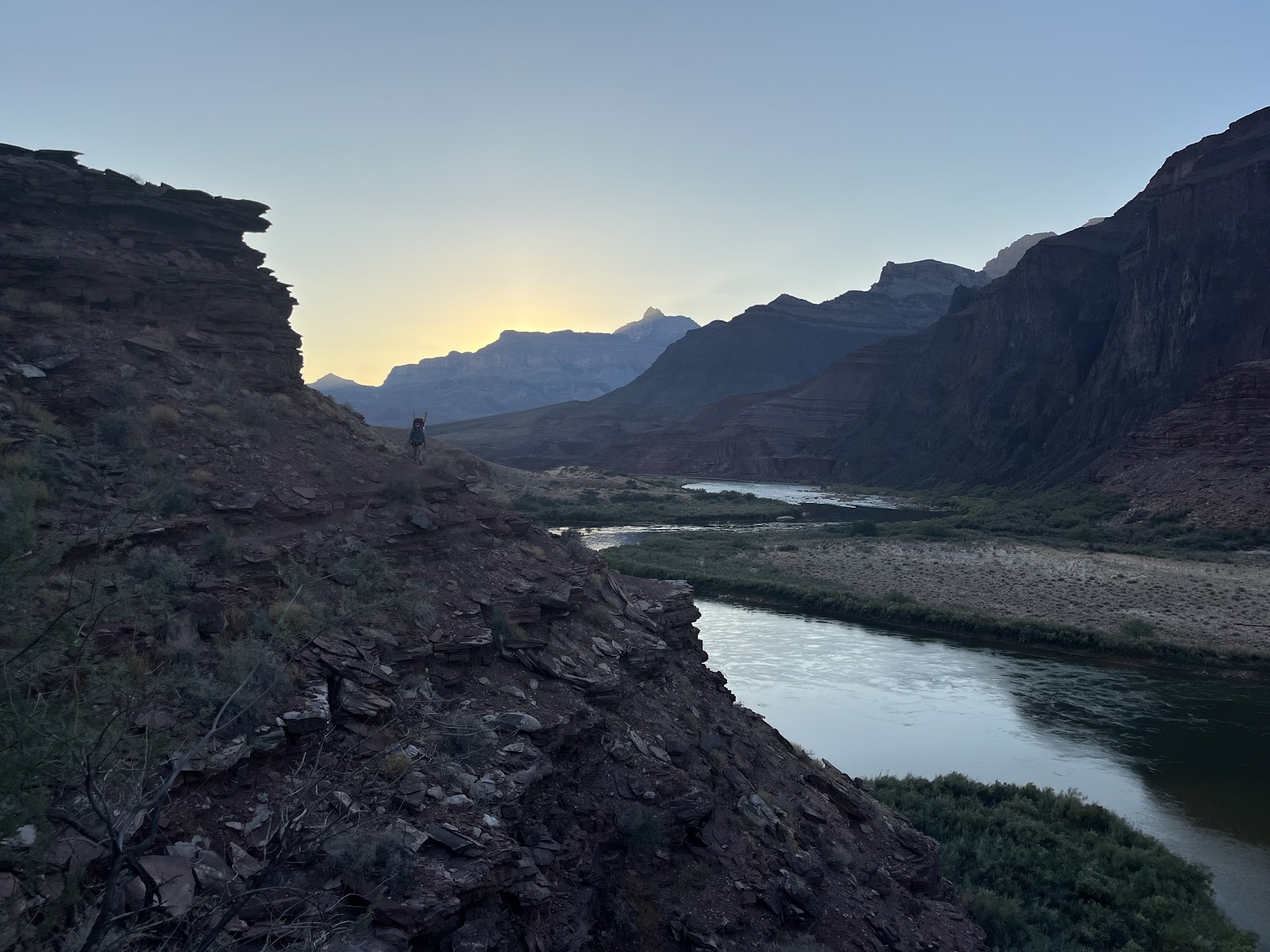
The next morning we woke up around 6AM, but snoozed a bit since it was still dark outside. Our plan for the day was to hike up-river on the Beamer Trail to the confluence of the Little Colorado River, inflate our packrafts, and paddle to Carbon Canyon where we would make our camp. We made our breakfast, packed up, and began hiking around 9AM. We knew we had a long day ahead of us, as the confluence is just over 9 miles from Tanner Beach. The Beamer Trail traverses the top of the Tapeats Layer and while beautiful, is very exposed. The heat, sun, and exposure resulted in us drinking more than we normally would, causing us to run out of water two miles before the confluence of the Little Colorado River.
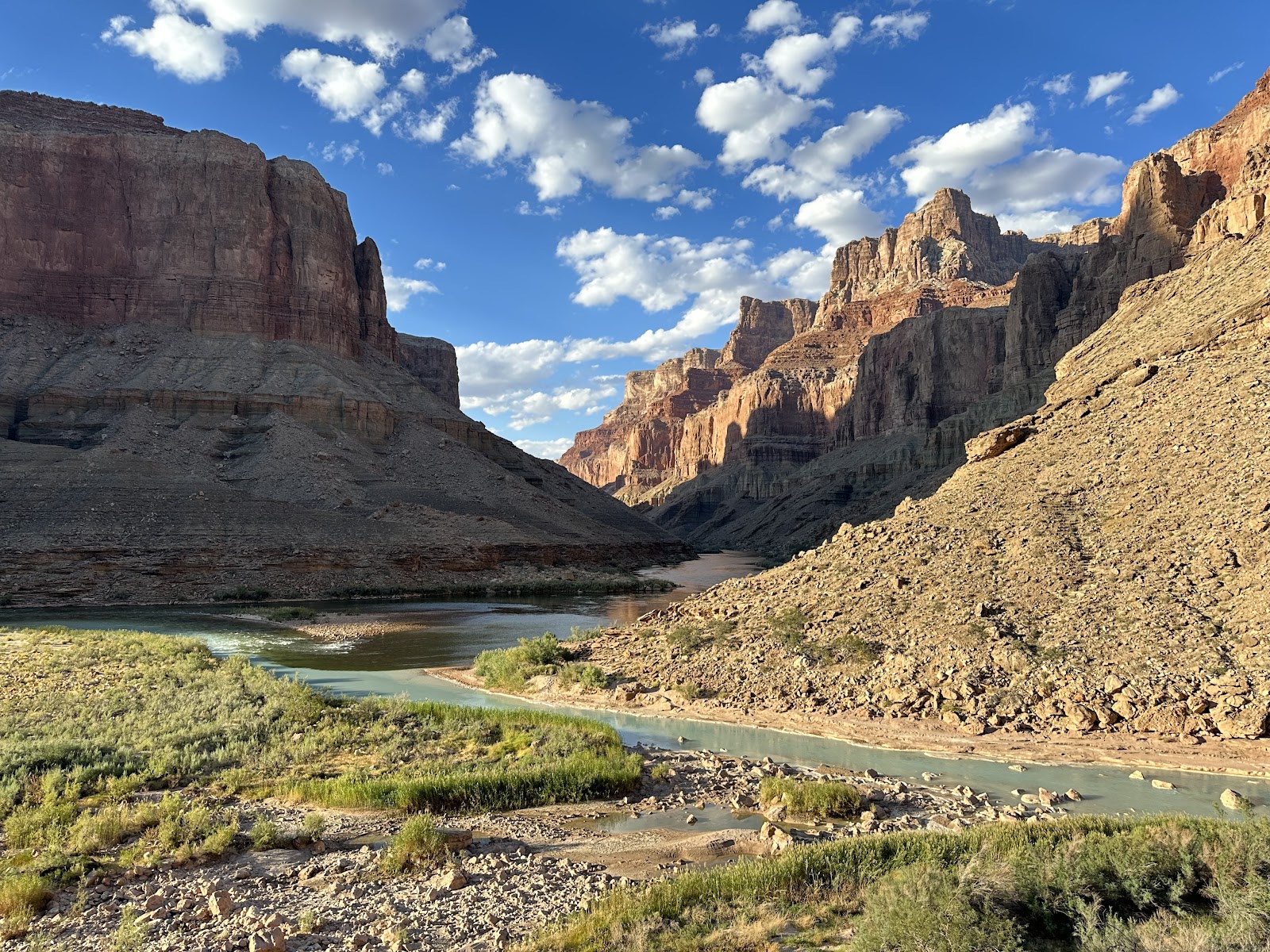
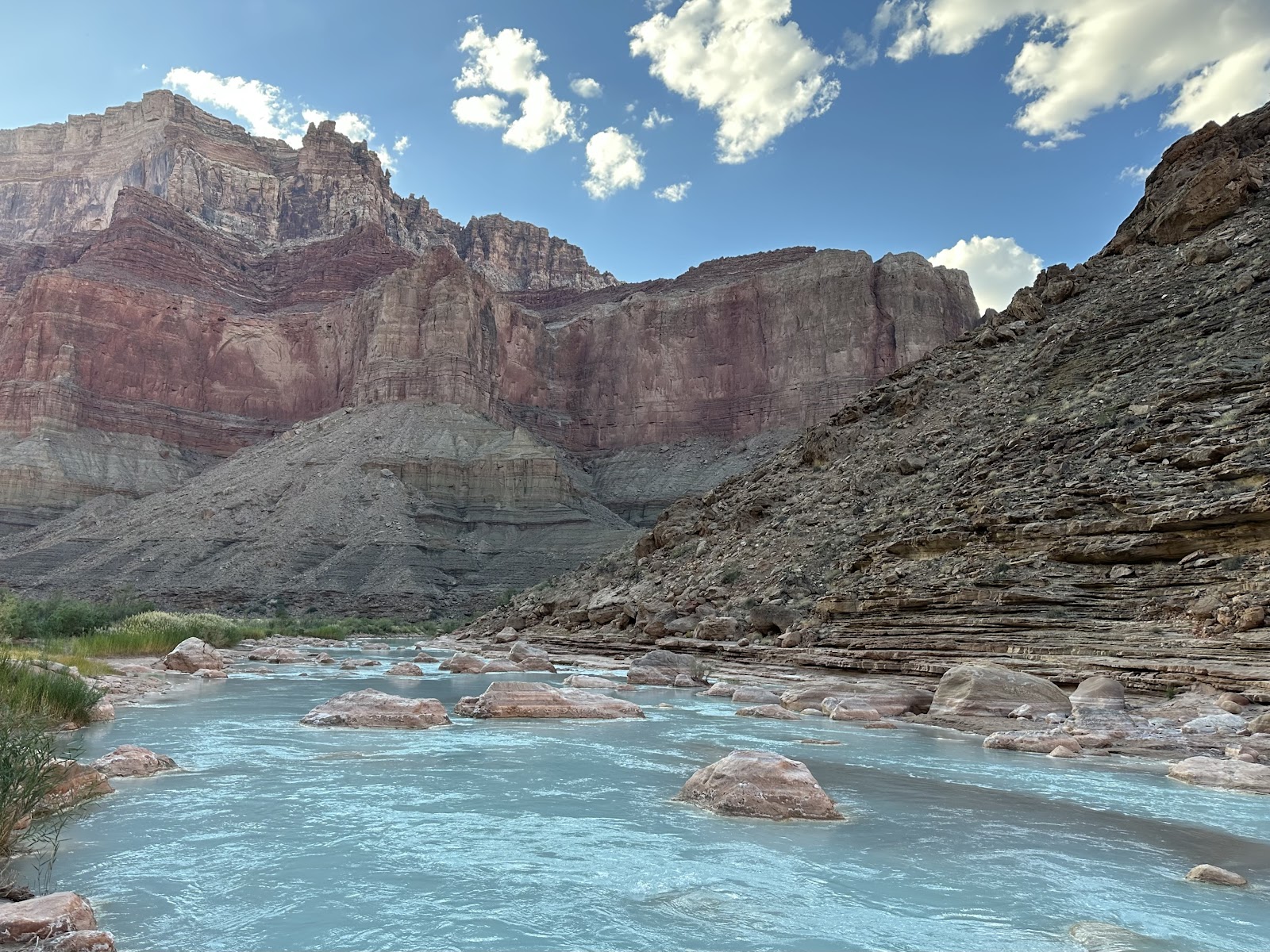
When we finally made it to the last camping area before the confluence around 3PM, we still wanted to hike the quarter mile to the confluence and back, filter water and eat a snack. Then, we’d need to inflate boats, and paddle almost 3 miles to Carbon Camp. We decided to camp on the south side of the Colorado, rather than go to Carbon, out of time and safety considerations. The rapids we were planning to encounter were not large or technical, but one mistake when you’re tired can be consequential. We dropped our bags at the campsite and noticed bobcat prints in the sand.
We spent sunset on the shore overlooking the confluence, and enjoyed the most magical lighting we could’ve imagined. The Little Colorado River is an extremely spiritual place, and the confluence holds strong cultural significance to the Navajo, Hopi, and Zuni peoples. Although many people view Grand Canyon as a playground of sorts, it’s important to remember that the land is a place of spiritual connection and heritage to eleven federally recognized tribal communities. We quietly listened to the currents and surrounding life, while opening our hearts to the land.
After returning to camp, we again set up our tent, ate our freeze-dried meals, and went to sleep. Around 2AM we both awoke to what sounded like a small animal being killed. We agreed that the local bobcat also needed a meal, and went back to sleep.
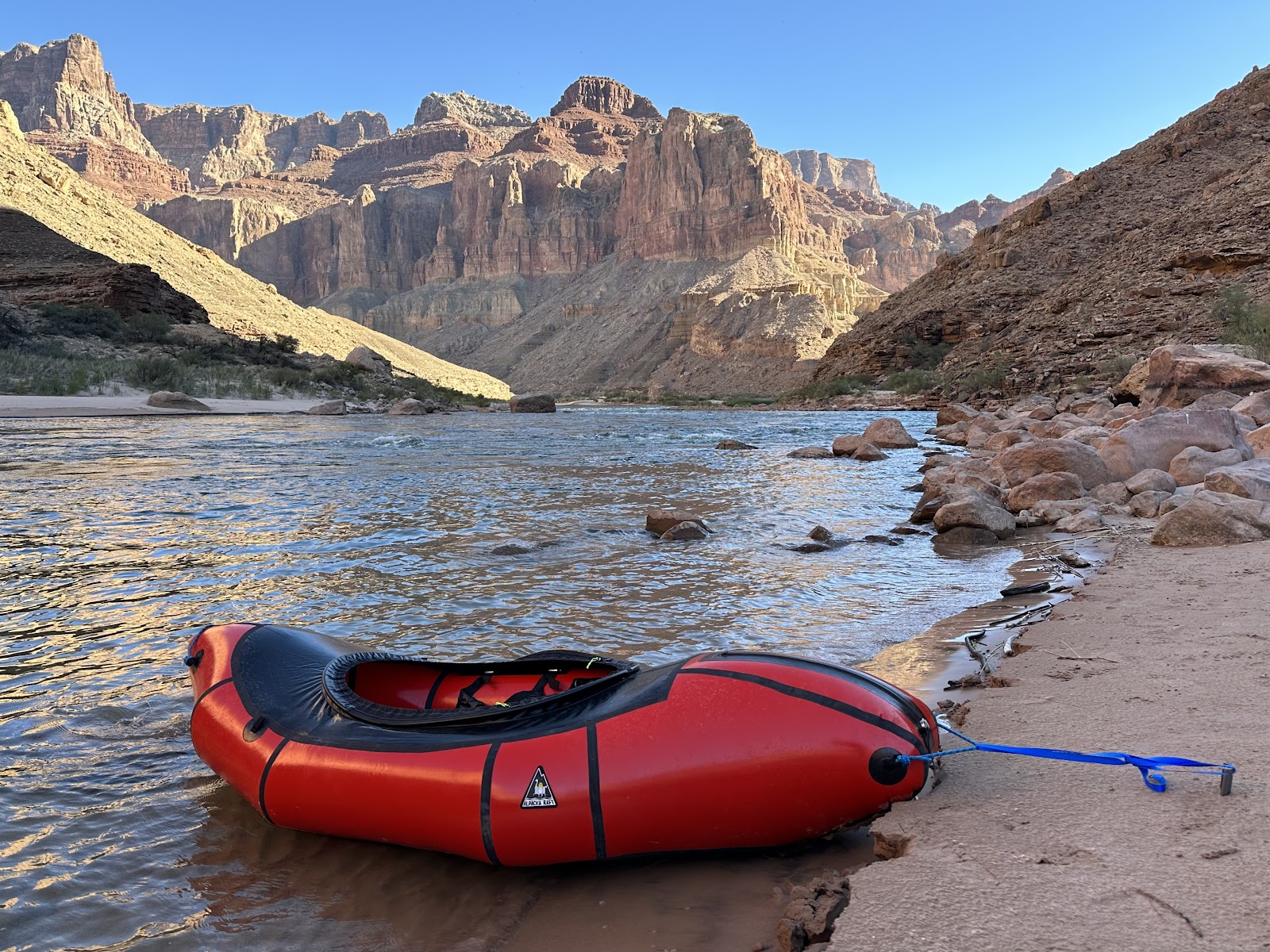
We took our time having breakfast and inflating our boats the next morning. We zipped in our coaming, put on our skirts, and headed down river. Michael and I both wore Immersion Research semi-dry paddling tops. The afternoons were warm, but the mornings were chilly, and we wanted to ensure our bodies stayed warm. I also had the privilege of demoing the new Immersion Research Packraft Skirt. I had only previously used the standard skirt that came with my packraft. As a small person with a short torso, most universal skirts are too loose and droopy for me. The Immersion Research packraft skirt was absolutely phenomenal. The tunnel was taut, and the deck continued to shed water through all of the splashy waves! It’s amazing how much having proper gear can increase your confidence and comfort.

We made it to Carbon around 10:45 AM, let out some air to prevent the packrafts from exploding in the sun, and explored the Carbon/Chuar/Lava hike. This hike connects Carbon and Lava Canyons, and is extra cool because it takes you directly through a fault line. As you rise out of Carbon Canyon, you’re treated with views of rolling hills which is quite the contrast to the rocky cliffs! One thing that always stands out to me in Grand Canyon is how quiet the silence is. If you need to think, Grand Canyon is certainly the place.
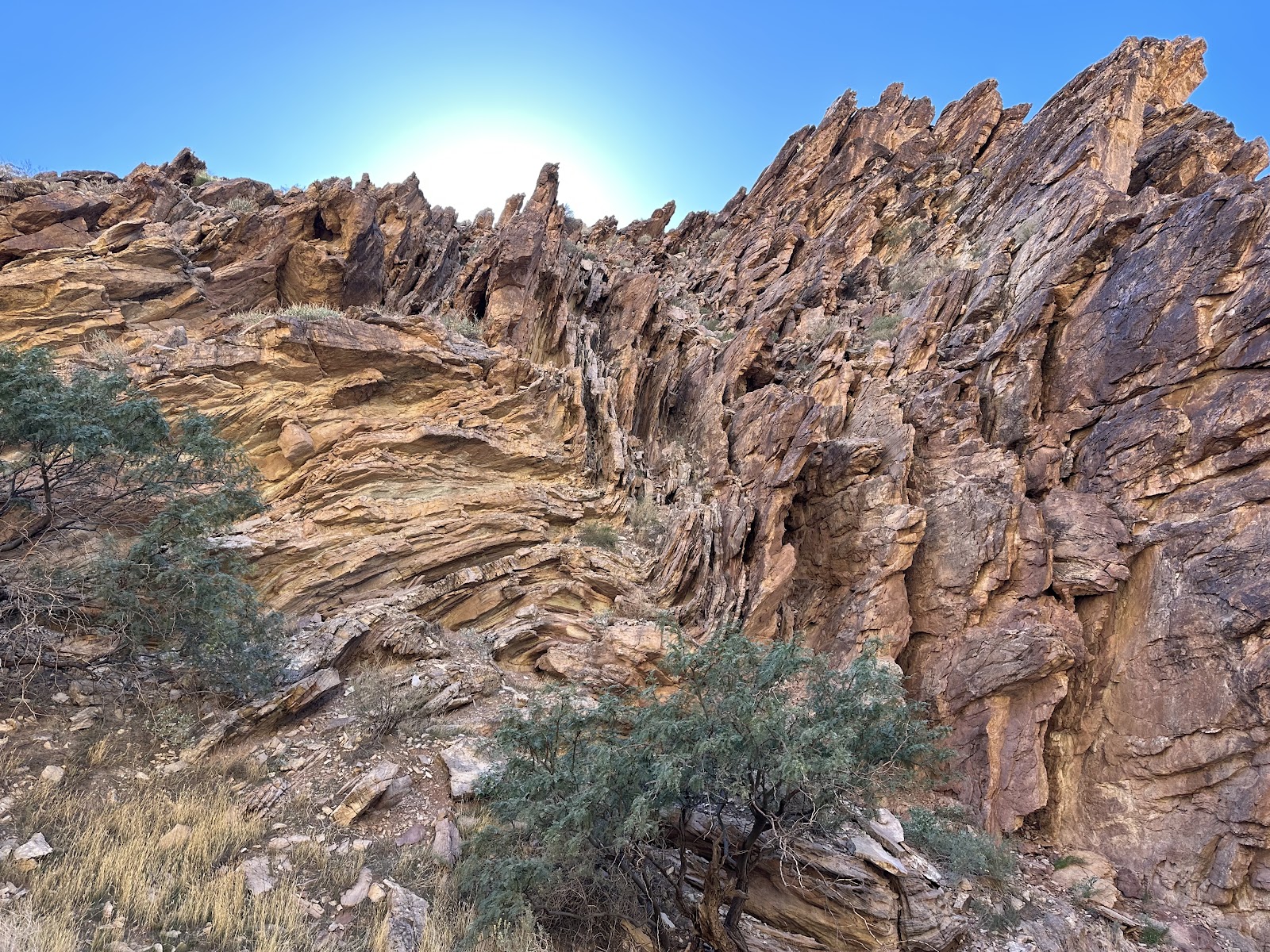
These three miles were especially pleasant without our 50 pound backpacks.
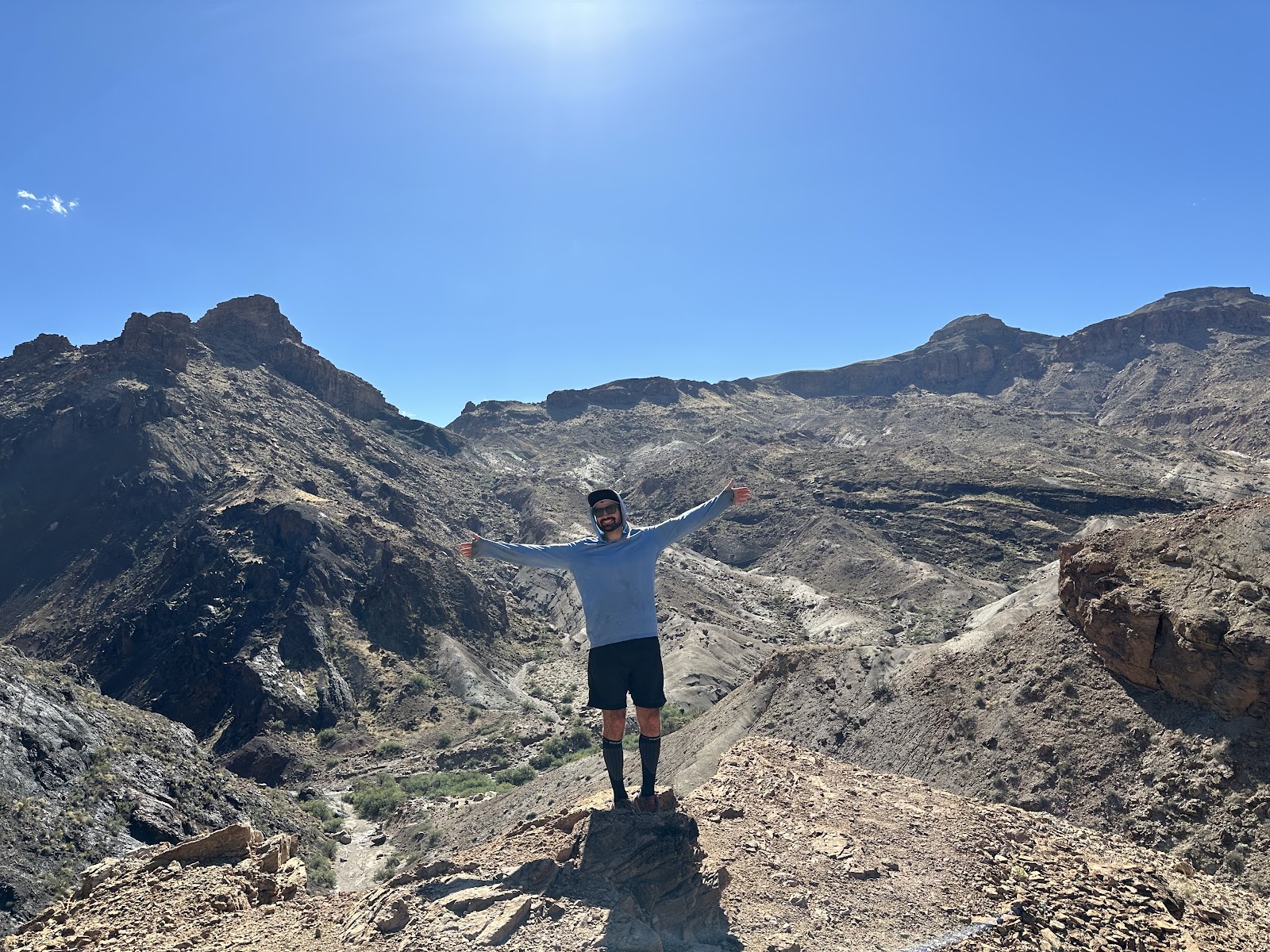
We went back to the boats, ate a snack, and continued down to Tanner Camp. When we arrived at the campsite there were about ten other people already established for the evening. This backpacking site is extremely popular, so we expected to encounter others. We dried our gear, made camp for the night, and reminisced on our day of paddling. We didn’t necessarily paddle anything big, but we definitely had fun. There were lots of boogie water wave trains and one labeled rapid (depending on your guidebook). While cooking and eating our meals, we were visited by multiple mice. Mice are one of the downsides of popular tent sites in the Grand Canyon, and were an incentive to finish our meals and call it a night.
On the last day, we woke up before first light, had a quick breakfast of instant coffee and granola, and began our hike while others at the site were still in their tents. The hike was grueling. Our legs were tired and our feet were blistered. I always bring headphones on big canyon hikes, and on this day, I listened to three Taylor Swift albums to distract myself from my aching body.
As we made our way out of the Canyon, I couldn’t help but feel fulfilled. The purpose of the trip was to spend time in Grand Canyon, visit the Little Colorado River, explore a couple of side canyons, and disconnect from society. Sure our packs were heavy and we did what was supposed to be two days of boating in one day, but the itinerary doesn’t always go as planned. We stayed safe and had fun.
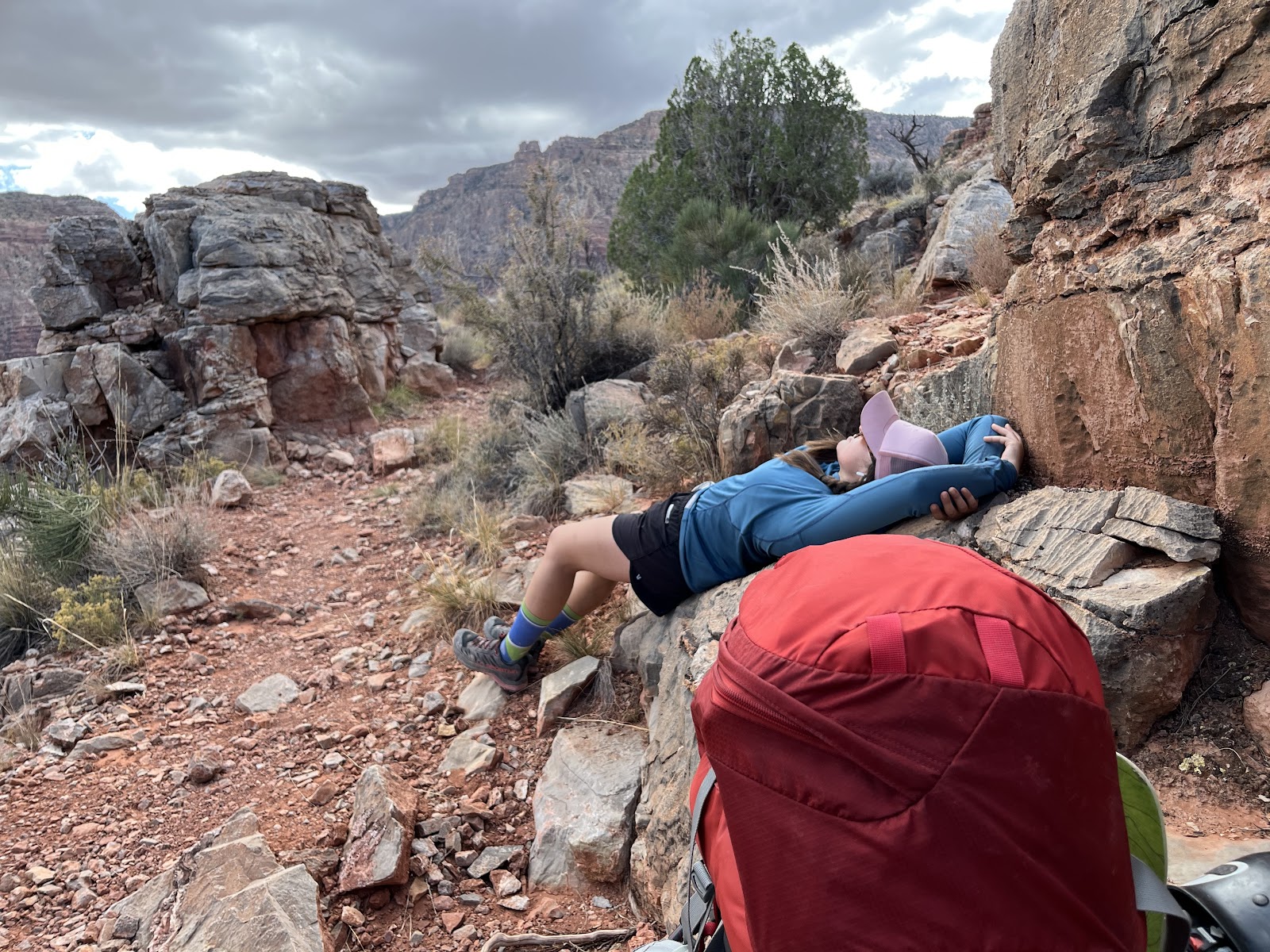
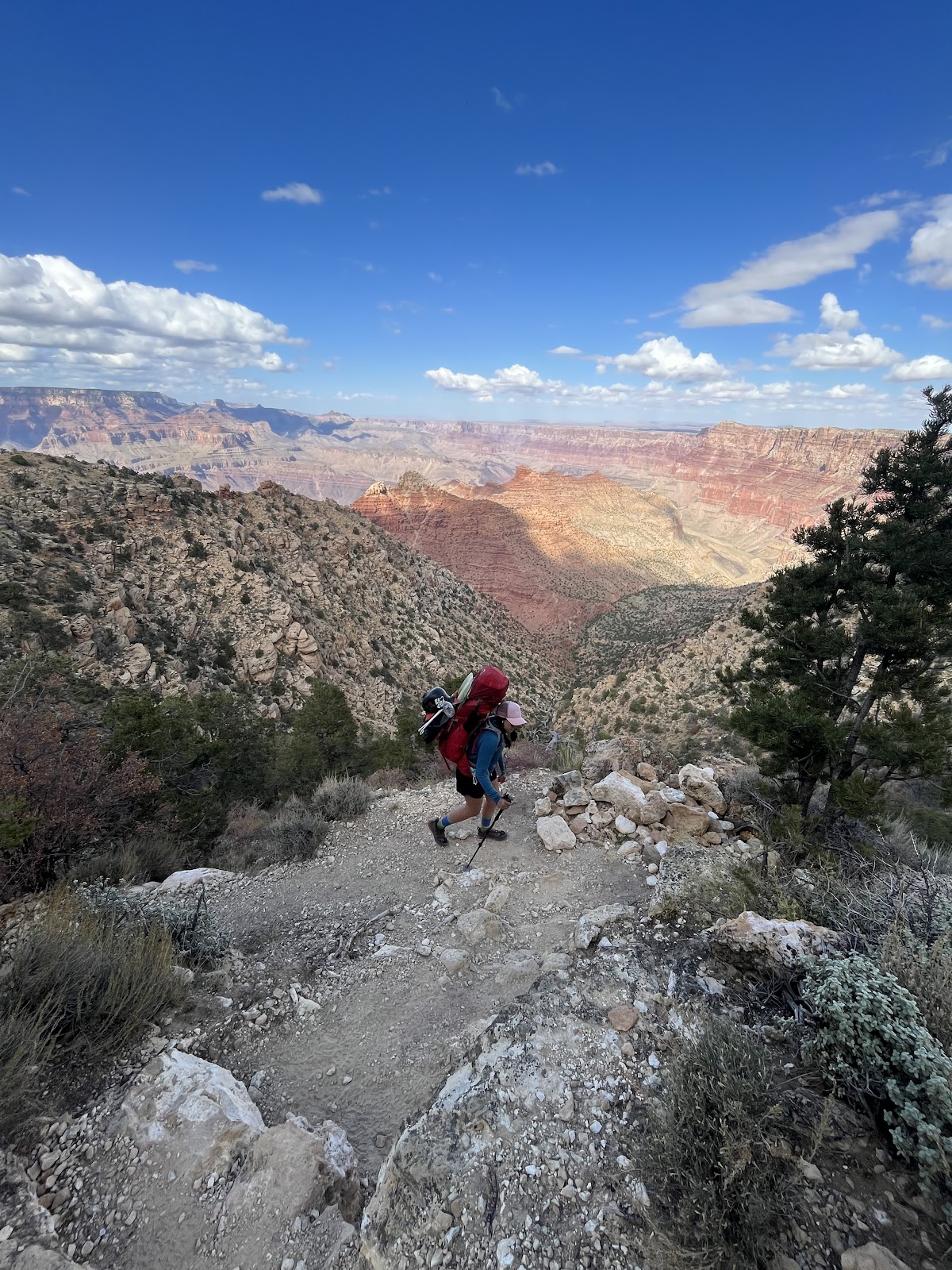
Sometimes, I fight an internal battle of feeling the need to push my physical limits with whitewater, and having the desire to just relax and have fun. We live in a culture where everything is shared on social media, and people are trying to do the next big thing. This makes it hard to not always push your limits; makes you feel like you’re not doing enough. This trip was a good reminder that sometimes, instead of being about the gnar, it’s about who you’re with, and where you are.
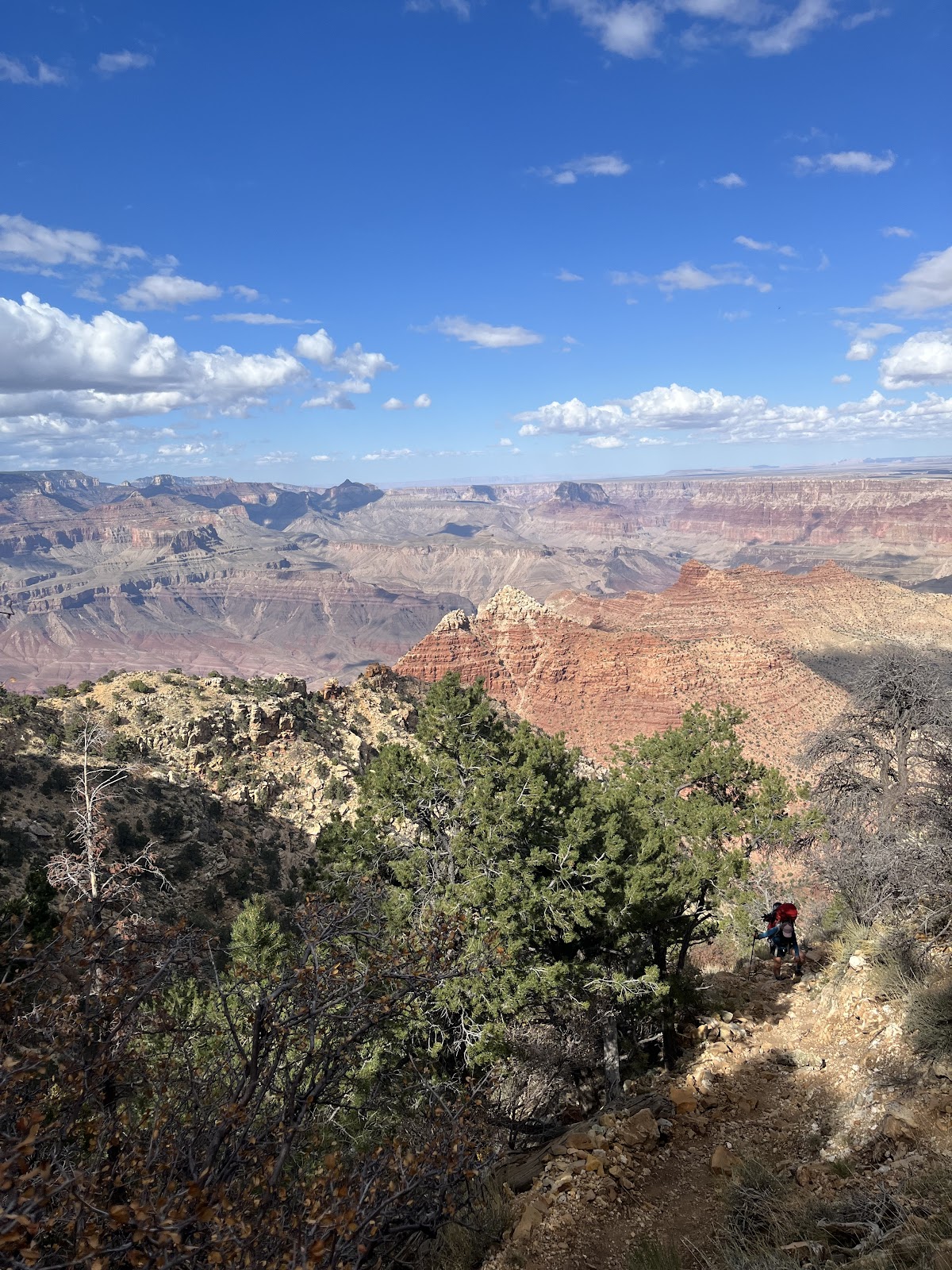
Packing List: (My style may not be your style, and that’s OK)
Sponsor Spotlight: Immersion Research (IR)
We're proud to have Immersion Research (IR) as a generous sponsor of the American Packrafting Association. IR’s support helps APA continue its mission to build community among packrafters, promote safety and education, and protect access to public lands for responsible recreation. We're grateful to IR for helping make this work possible!